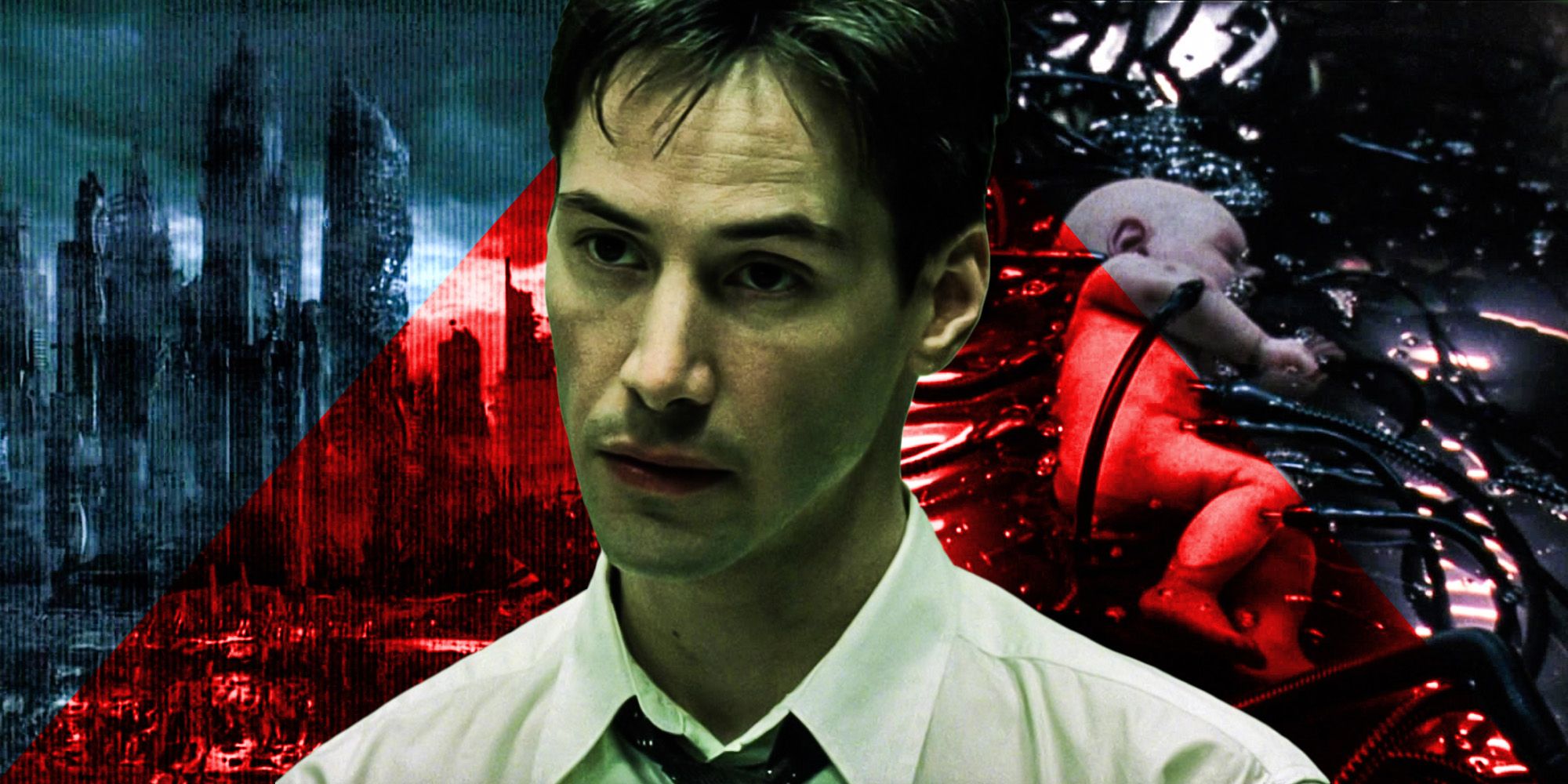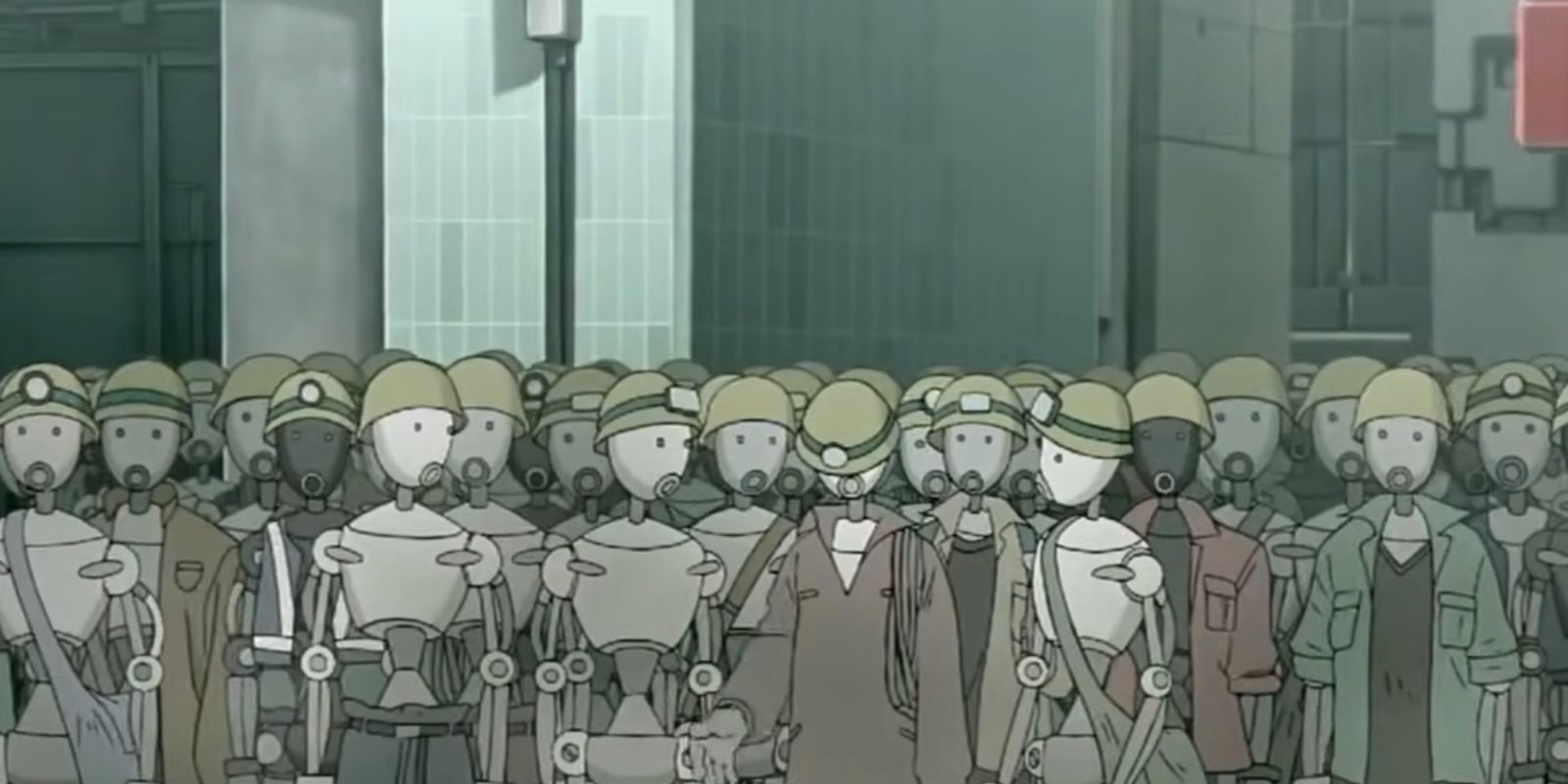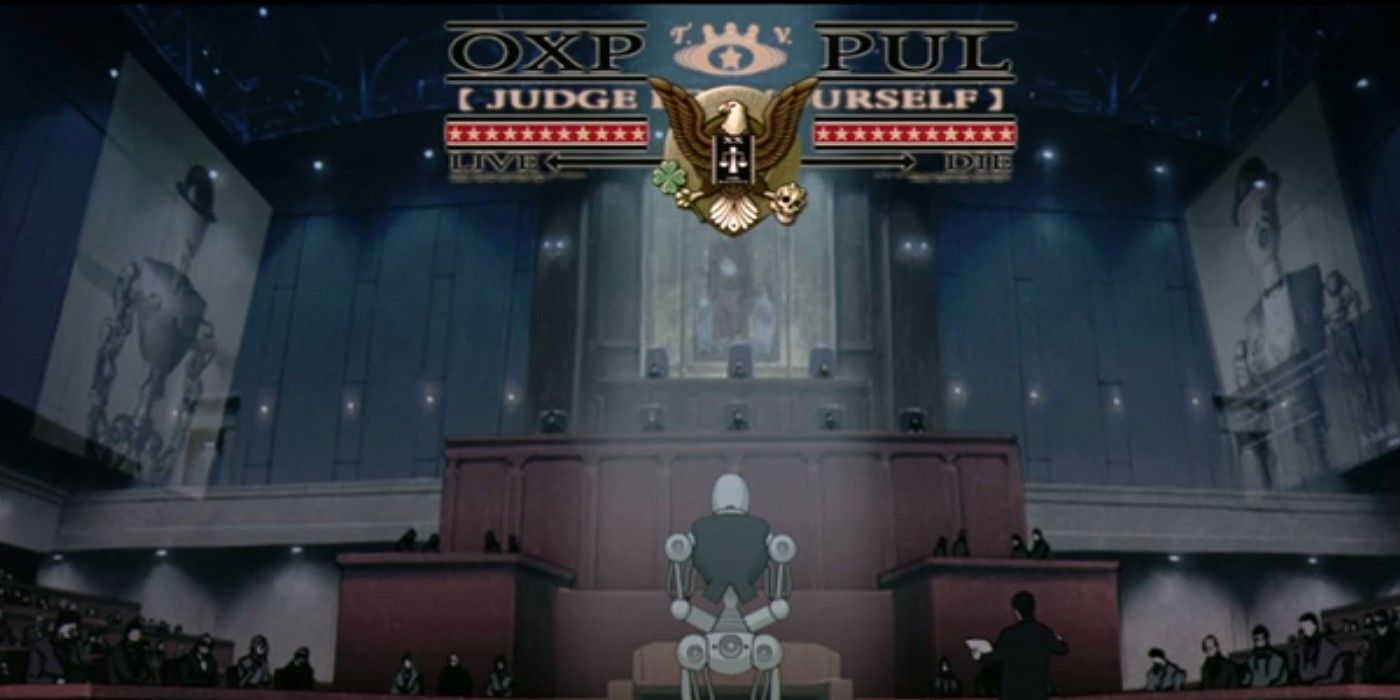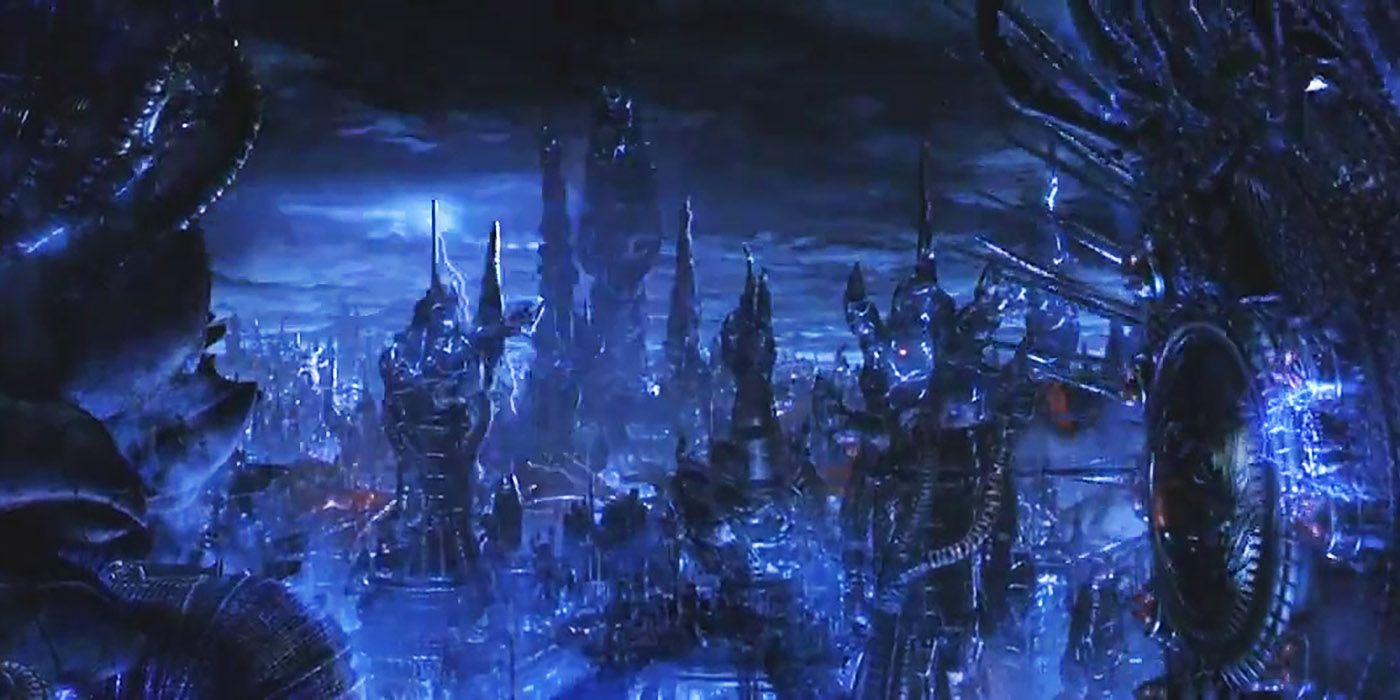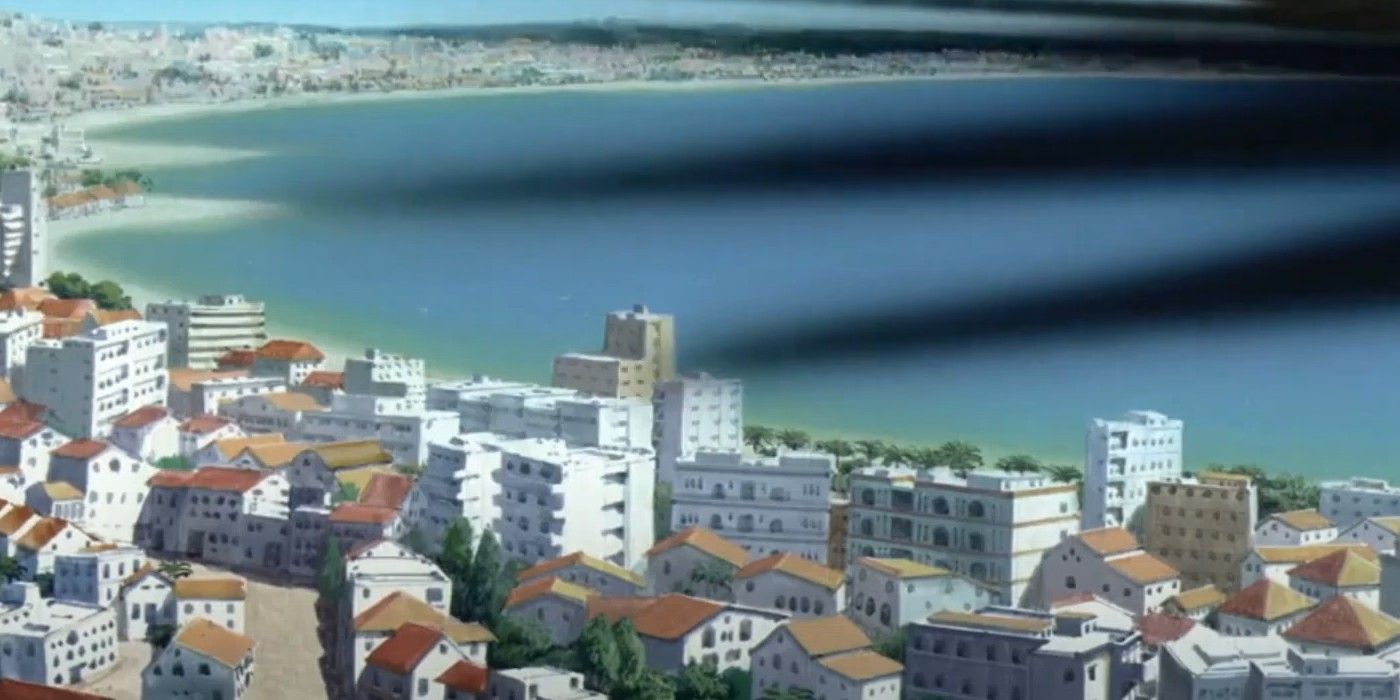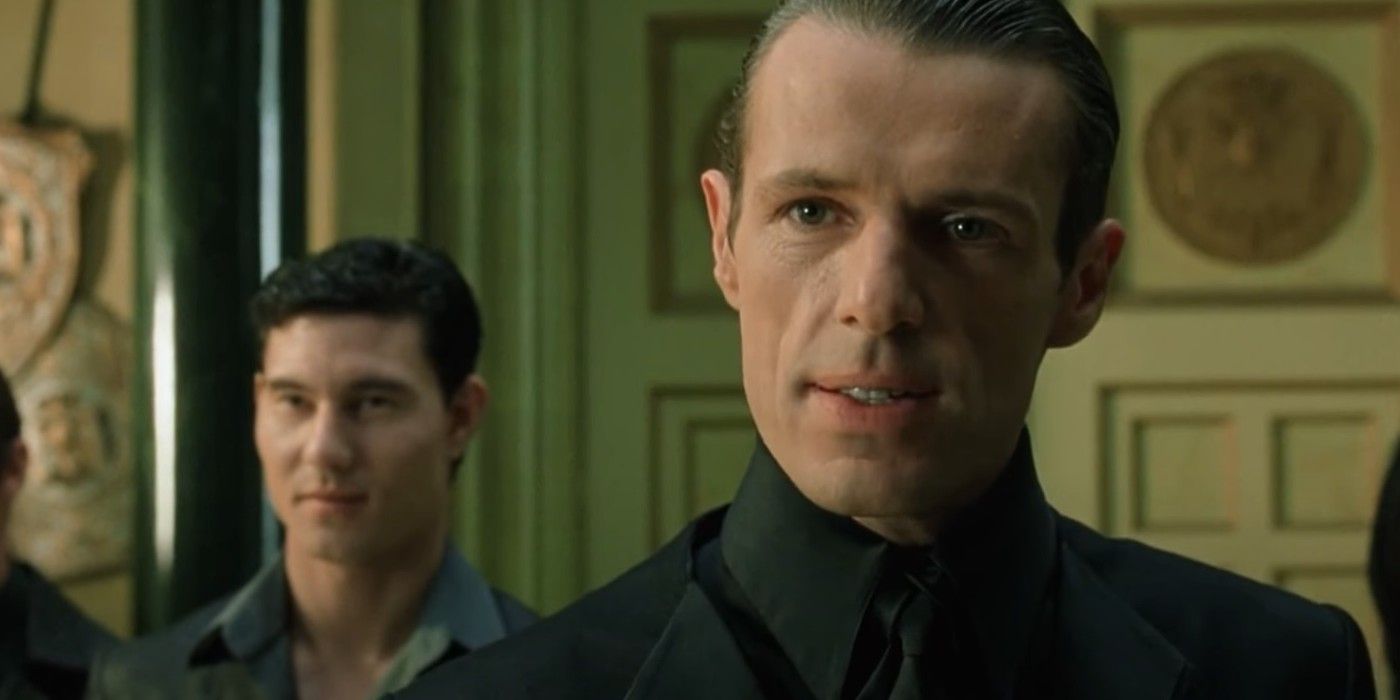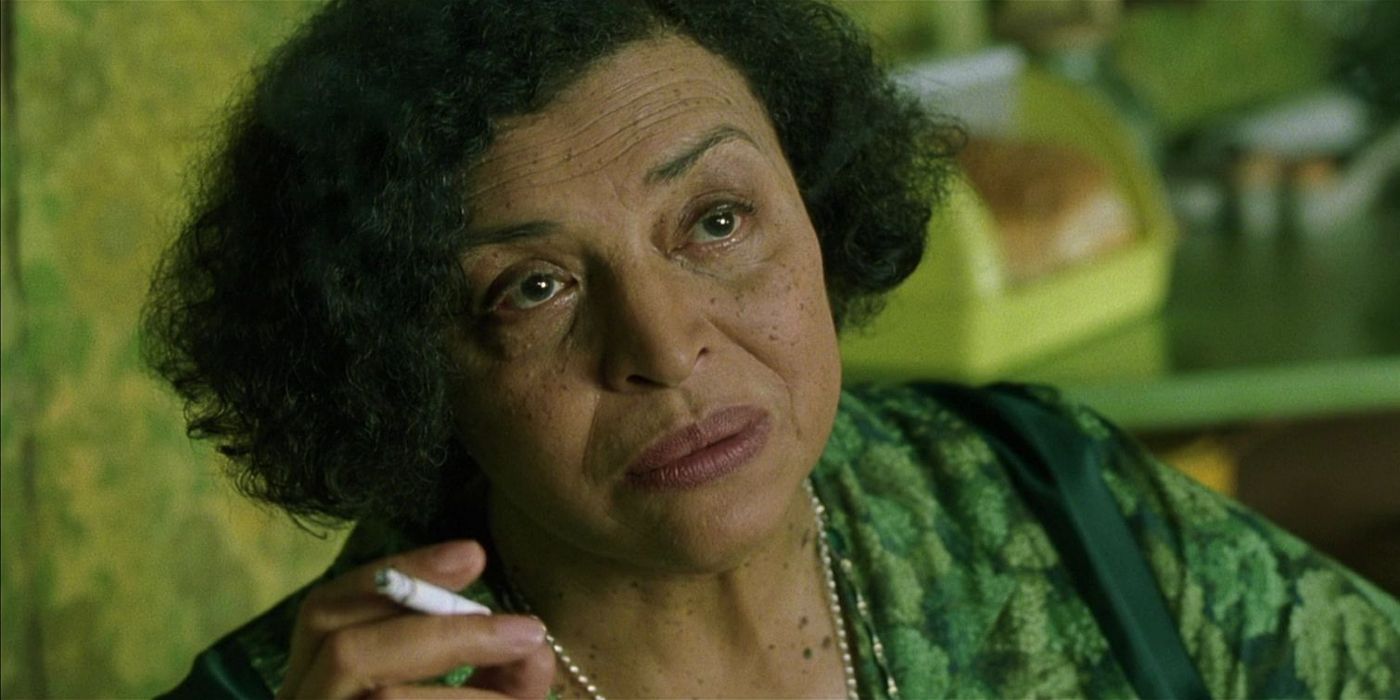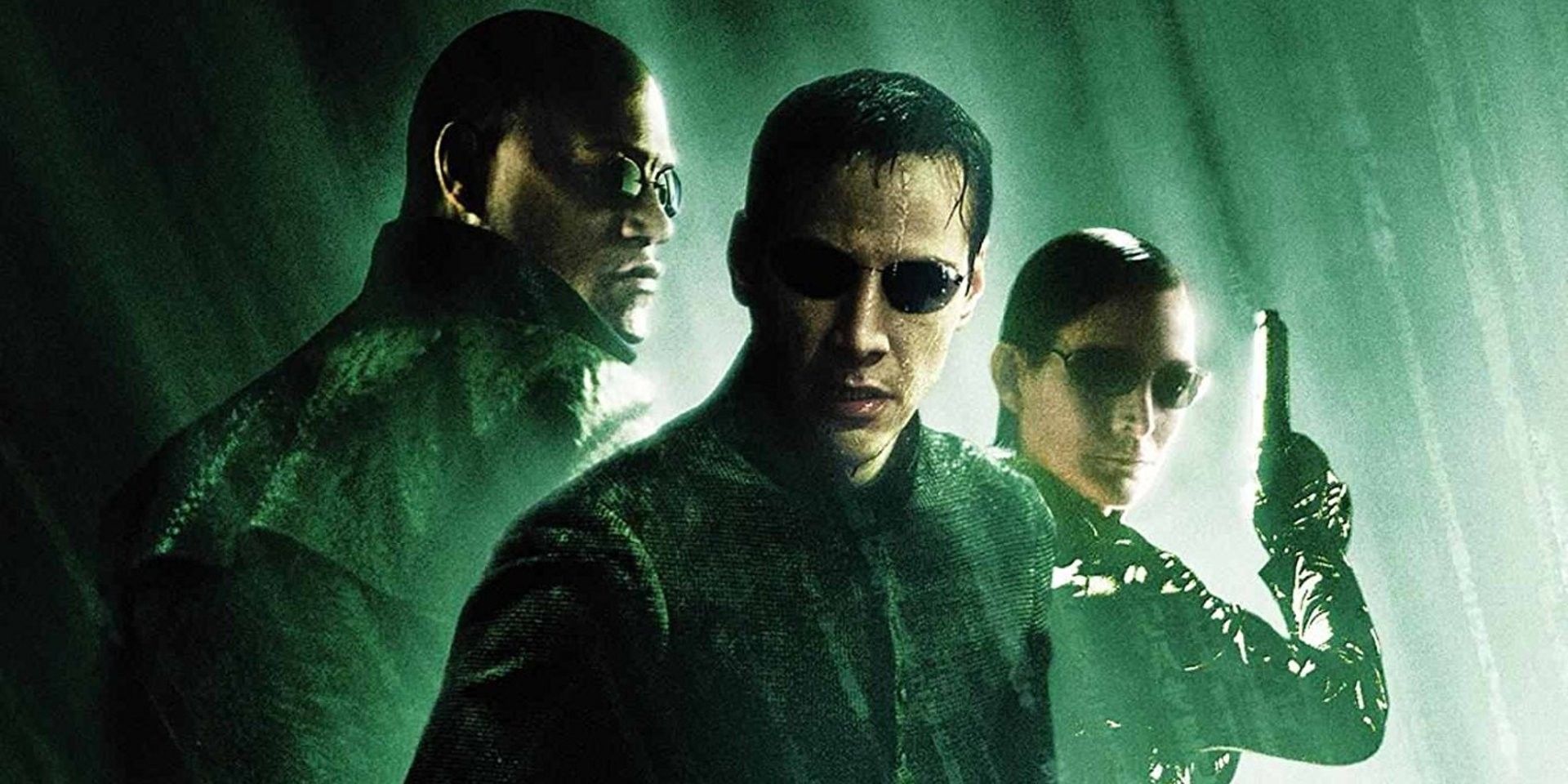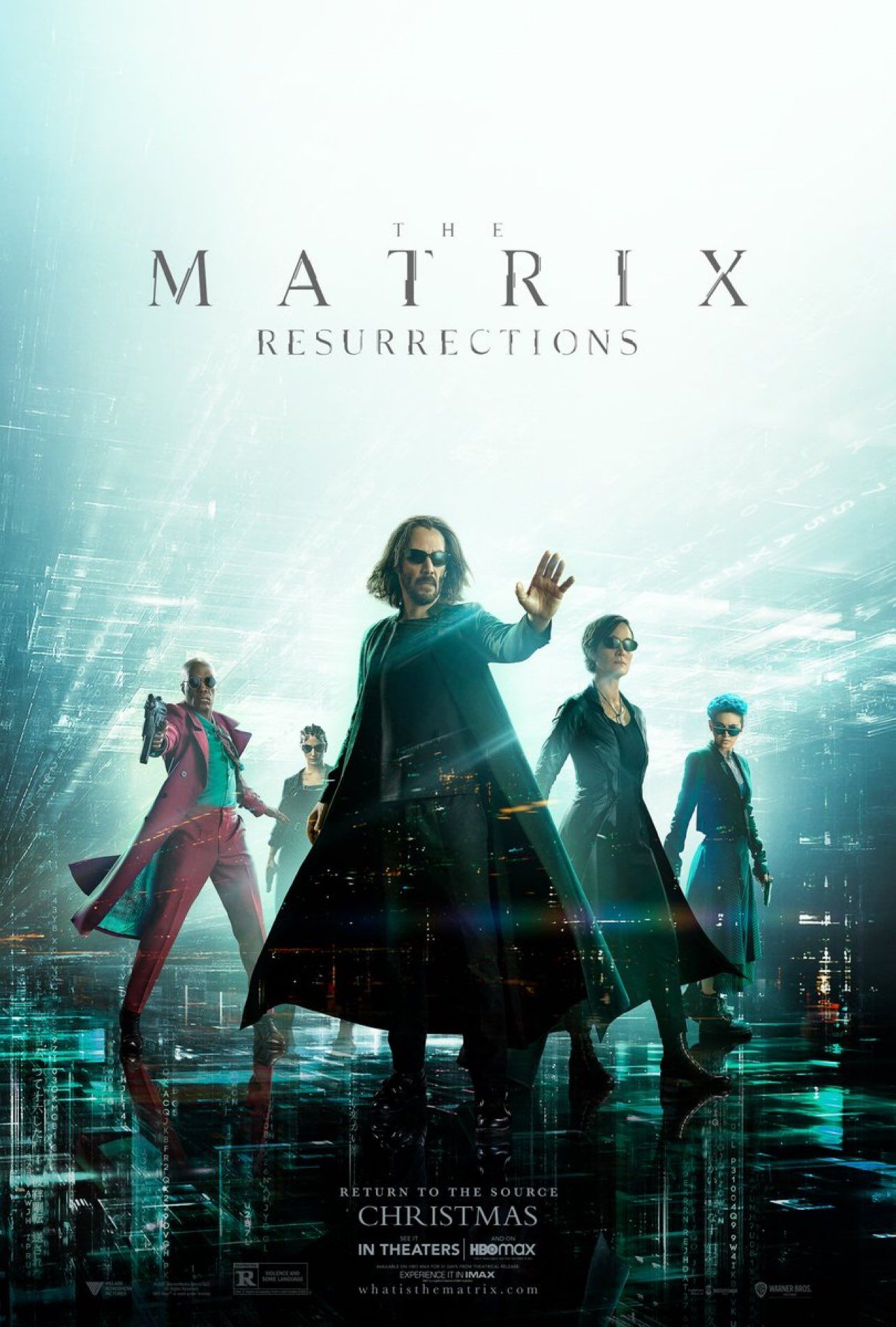A lot happened before society became the dystopian nightmare seen in the Matrix trilogy, from The Matrix Machine War to the creation of the first Matrix. 1999's The Matrix was an instant cultural sensation, its deep concepts and lore seeping through the boundaries of cinema and into mainstream consciousness at large. Keanu Reeves' Neo discovers the world around him (something vaguely resembling our own pre-millennium reality) is a fabrication. As Morpheus explains, a race of sentient machines overtook Earth and subdued humanity long ago, trapping the remainder inside a simulated existence and harnessing their energy like a battery. Morpheus and his people have been working to liberate humanity from enslavement, and win the war against the Machines.
Since The Matrix begins so long after the fall of man, the Wachowskis' The Matrix movies represent merely the tip of a far larger post-apocalyptic iceberg. The arrival of Neo, his battle against Smith, and peace in Zion is the final chapter of an epic sci-fi saga, of which the earlier acts are told elsewhere. There's an abundance of exposition in the Matrix movies, but while Morpheus and The Architect can't help but regale history, they can't cover everything. Much of the lore is detailed in spinoff media, such as The Animatrix. With The Matrix: Resurrections now available on streaming, there's no better time to look back at exactly what happened before the hit 1999 film, from The Second Renaissance and The Matrix Machine War to Operation Dark Storm and the Machines entombing humanity in the Matrix.
The Second Renaissance
The beginning of The Matrix timeline is arguably when mankind first designs machines bearing artificial intelligence, thereby setting itself upon the slipperiest slope in science fiction. Although The Matrix doesn't reveal how programs were created, The Animatrix shows robots were prevalent across Earth as the primary source of labor by the mid-21st century. The introduction of intelligence synthetic mechanoids led to a period known (ironically, given what was to come) as the Second Renaissance. Humans reaped the benefits of having a workforce that didn't require a living wage, time off, or coffee breaks, and the machines, in turn, willingly carried out their programmed functions. Things couldn't be going better, until a single Machine stood up for itself, starting the buildup to The Matrix Machine War.
B1-66ER
Arguably the most significant Matrix event not mentioned in the movie trilogy is the case of B1-66ER. The rich owners of this curiously-named unit wanted to decommission the robot, effectively ending his life. In a test of B1-66ER's capacity for emotional understanding, he acted in self-defense, brutally killing his master, another employee, and several dogs as revealed in The Animatrix. Though many believed this 'malfunctioning' machine should be destroyed for its actions, others defended his right to sentience, and the trial went to court. Predictably, the verdict did not fall in favor of robot-kind.
Not only was B1-66ER sentenced to be decommissioned, but the Machine race as a whole was deemed too dangerous to exist, and the computer culling ensued. B1-66ER's death inevitably sparked a movement among robots, supported by small groups of humans who empathized with their plight, and the so-called Million Machine March began. An early hint of The Matrix Machine War, Earth's police forces and military were charged with putting down as many robot units as possible, while the Machines themselves argued and protested their right to exist, demanding nothing more than the same status their fleshy creators enjoyed.
01 Is Created
Humanity's Machine crackdown in The Matrix franchise left robot numbers dwindling, but since their method of reproducing is considerably more efficient than ours, wiping them out completely was all but impossible, making The Matrix Machine War even harder. The Machines retreated to the Middle East and established 01, otherwise known as Machine City, which would serve as their hub of operations all the way through to the Matrix trilogy era.
The founding of 01 ushered in another period of peace between the warring races. Machines upgraded and improved, developing new technologies at a staggering rate, such as the hover system that would be used at a later date in The Matrix haven Zion. 01 sold these products cheaply to humans, and a cooperative bridge was built. Once again, however, man sealed its own fate. As 01 became an economic powerhouse, United Nations economies suffered, and relations became frosty once again. Unable to reach a solution, the U.N. launched a nuclear attack upon 01, ending all possibility of peace, and triggering The Matrix Machine Wars.
Rage Against The Machines (& Operation Dark Storm)
The resulting conflict leading up to The Matrix Machine War proved rather one-sided. Not only were Machine troops infinitely more efficient, but the human economy had become deeply reliant on tech imported from 01, putting man at an immediate disadvantage. Outnumbered and outgunned, the United Nations, in its wisdom, settled on a final gambit known as Operation Dark Storm, which entailed blanketing the planet's atmosphere in an unyielding layer of perma-darkness, thereby cutting off the Machines' access to solar energy.
Dark Storm was an innovative idea born out of desperation, but once again the ever-developing Machines once again proved harder to kill than anticipated. The Machine War rumbled on. Nevertheless, Operation Dark Storm explains why the world above Zion is shrouded by constant darkness in The Matrix. While cutting off the Machines from their primary power source seems like a simple solution on paper, forcing the Machines to look for alternate power sources doomed humanity to a hellish fate.
Victory & Early Matrix Failures
Although Operation Dark Storm weakened the Machines' war effort temporarily, the Machines quickly turned the tide of the Machine War by unleashing the insectoid units used throughout the Matrix trilogy, which were far more effective against humans. 01's victory in The Matrix Machine War was cemented with an attack on United Nations HQ, crushing Earth's fleshy leadership and officially replacing it with the cold and metallic soul mankind itself arrogantly brought into being.
During The Matrix Machine War, Machines had already devised methods of transforming captured soldiers into energy sources for their newest weapons, but with the sun still blocked out, this needed to be replicated on a far larger scale once the fighting ended. Consequently, human battery farms were built and pods were built — the kind glimpsed when Neo first awakens in The Matrix. For maximum efficiency, the "crops" were sedated using a shared digital realm for the enslaved human minds to inhabit the titular Matrix.
Naturally, The Architect's first Matrix build was a veritable paradise, but as Agent Smith explains, the lie was rejected, causing thousands of physical bodies to perish. The Agents themselves were born at this stage, intended as a police force inside the Matrix, acting on behalf of the Machines. A second, nightmarish variant of the Matrix proved equally unsuccessful. It was during this build that The Merovingian, vampires and werewolves came into being, with the slimy underworld boss escaping deletion and founding a population of "exiles" that existed through future versions of the simulation.
The Machines designed The Oracle to tell them where the Matrix was going wrong during The Matrix Machine War, and found that a subconscious decision to accept the fabricated world was required, resulting in the Matrix fans are most familiar with. Unfortunately, this process meant 1% would choose the truth, and Zion would be formed as a new resistance to the Machines. The Machines' solution was to create The One - a program inside a human that would essentially absorb the subversion of the 1%, then reboot the Matrix from scratch while Zion was destroyed. This cycle occurs 5 times before Neo comes along.
Early Years Of Trinity & Morpheus
Based on dialogue within the Matrix trilogy itself, some preceding events involving the characters audiences know and love can be pieced together outside of The Matrix Machine War. Morpheus was unplugged at an unknown time, followed by the rest of The Matrix's human characters. Trinity was likely a hacker in her old life, and the Nebuchadnezzar crew rescue numerous other humans from enslavement during their early, off-screen adventures. The Animatrix's "A Detective Story" tells of one such instance with a man named Ash, who was taken by Agents before Trinity could help him.
Also before The Matrix begins, The Oracle tells Morpheus the prophecy of The One, sending Laurence Fishburne on a long and unlikely quest to find the hero who would free Zion and end The Matrix Machine War. There were, apparently, other candidates before Neo. The Oracle also revealed to Trinity how she'd fall in love, anticipating Neo's breaking of the cycle.
Another snippet of Matrix history can be found in a comic called "The Miller's Tale." Set during the early years of the current Zion reboot, Geoffrey and his companions venture out from onto the surface in a mission to learn the process of making bread. They succeed by finding video instructions and equipment on Earth's ravaged surface, and build a facility for food production, kept secret from the Machines. This helps to explain how the people of Zion keep themselves sustained in The Matrix's real world.
The Second Renaissance Can Be Viewed Online
For those who want to take a deeper dive into the events leading up to The Matrix Machine Wars, The Second Renaissance is available to watch in four parts on YouTube. The rarely peaceful time in The Matrix history hit the website around three years ago, and features several The Animatrix voice actors such as Julia Fletcher (Vampire Hunter D: Bloodlust), Jill Talley (Little Miss Sunshine), Dwight Schultz (Star Trek: First Contact), and James Arnold Taylor (Star Wars: The Clone Wars).
The Second Renaissance video was directed by anime director Mahiro Maeda, who directed all of The Animatrix, and written by both Lana and Lilly Wachowski. The Animatrix as a complete anthology isn't free to stream in its entirety — however, it is available for purchase from websites like YouTube, Amazon Prime, Google Play, Apple TV, Redbox, and Vudu. For those who want a complete The Matrix history, The Animatrix should be considered necessary viewing.

